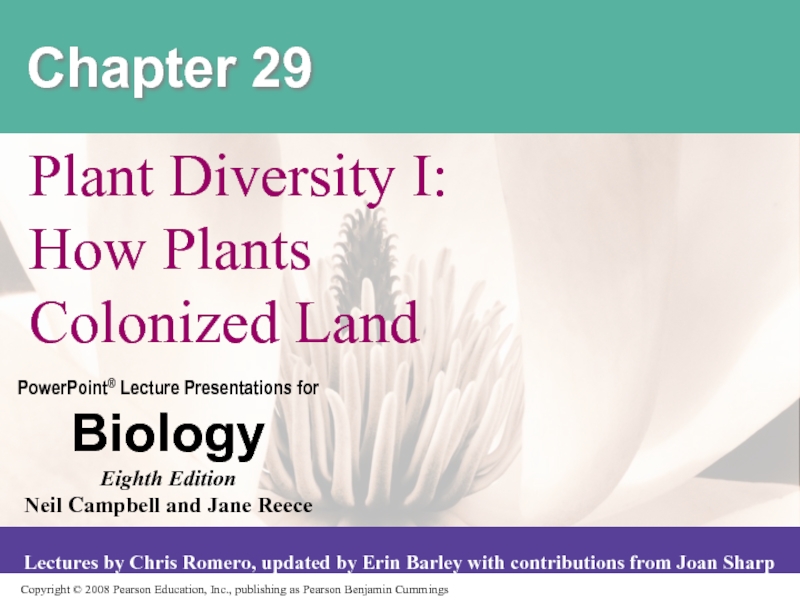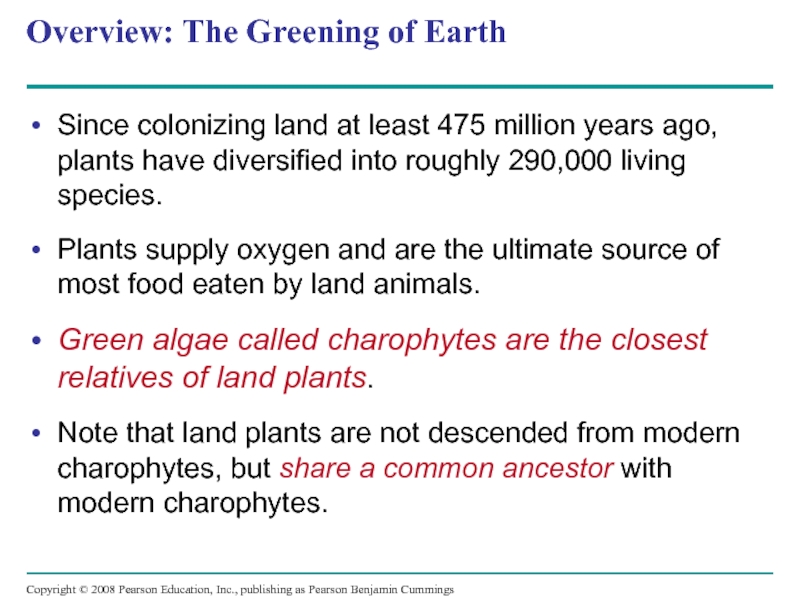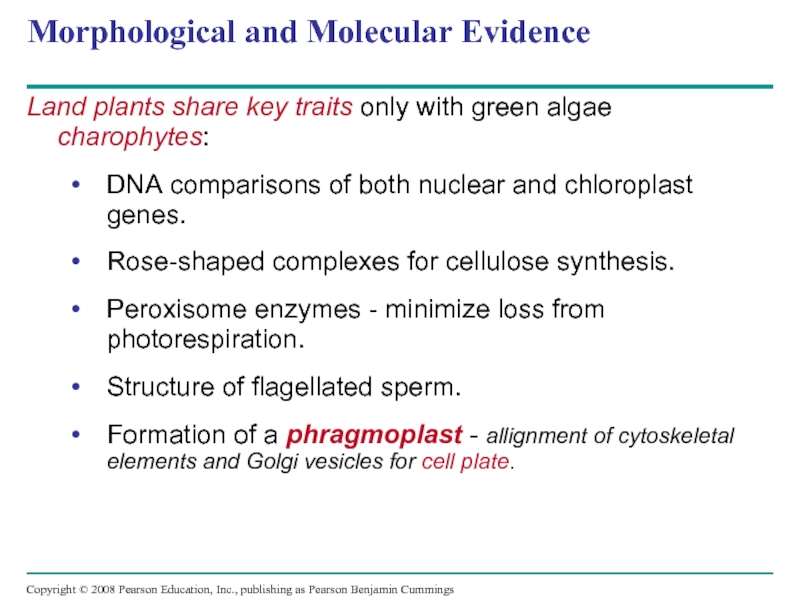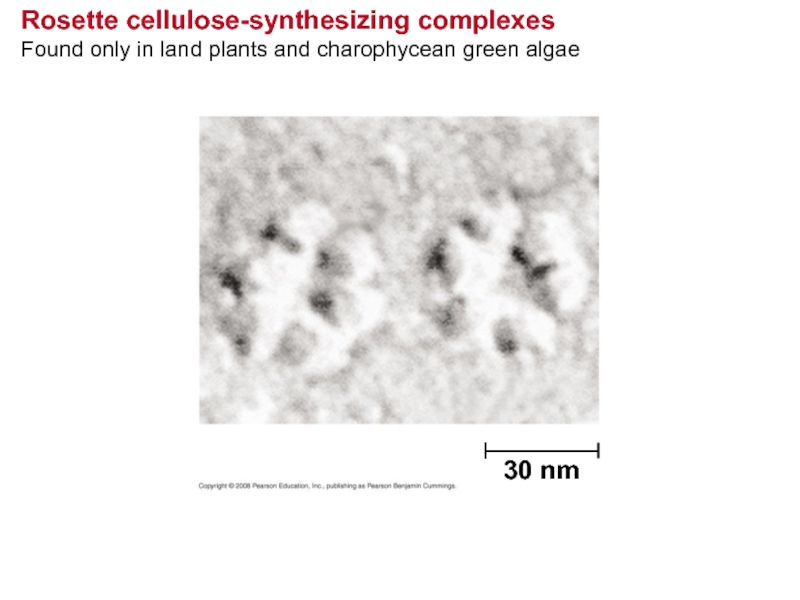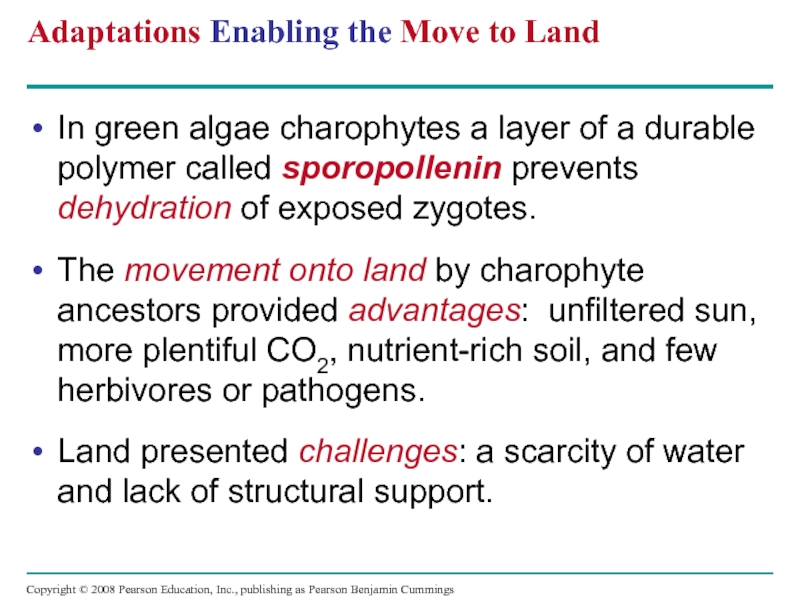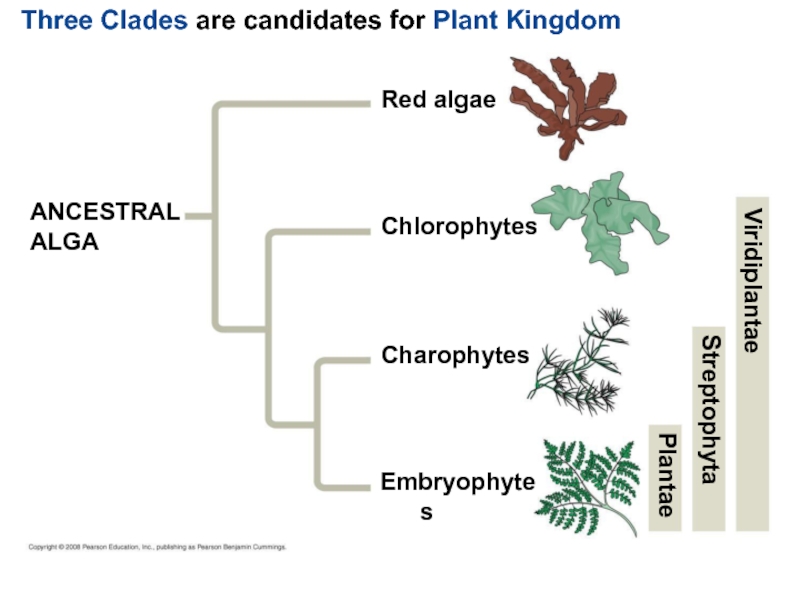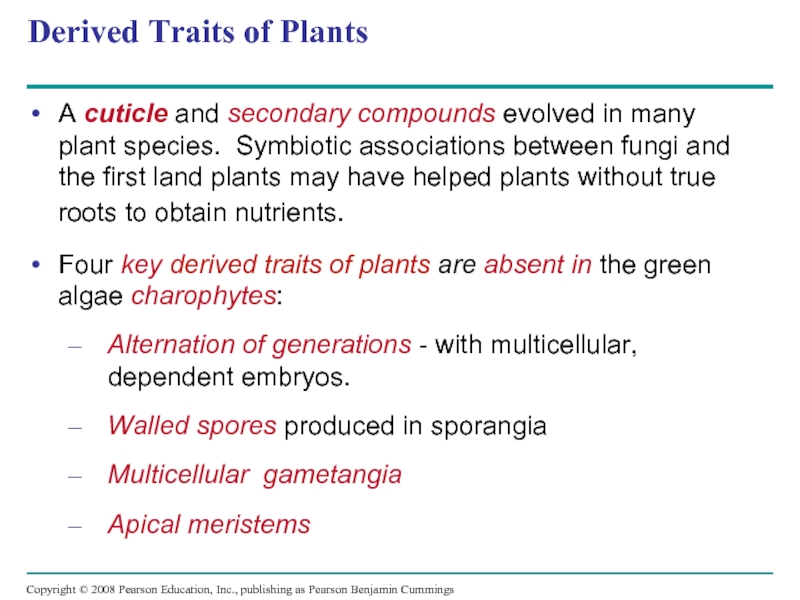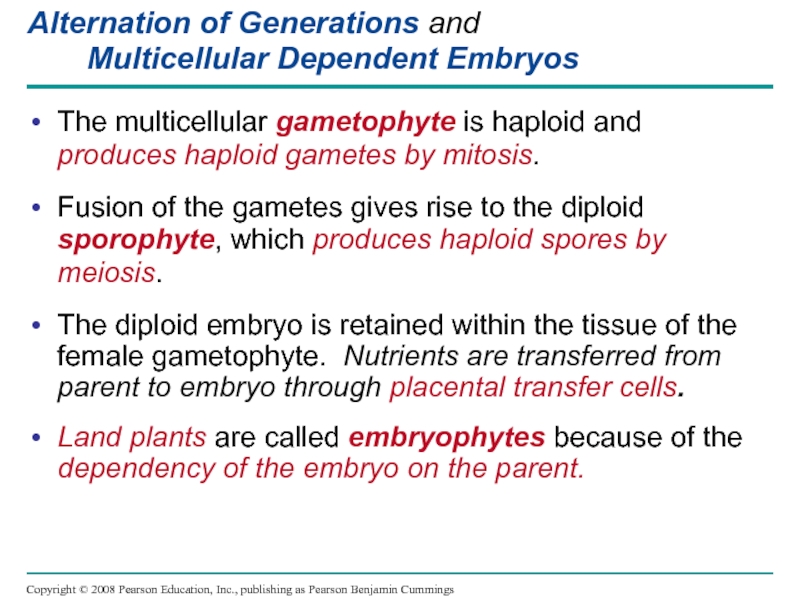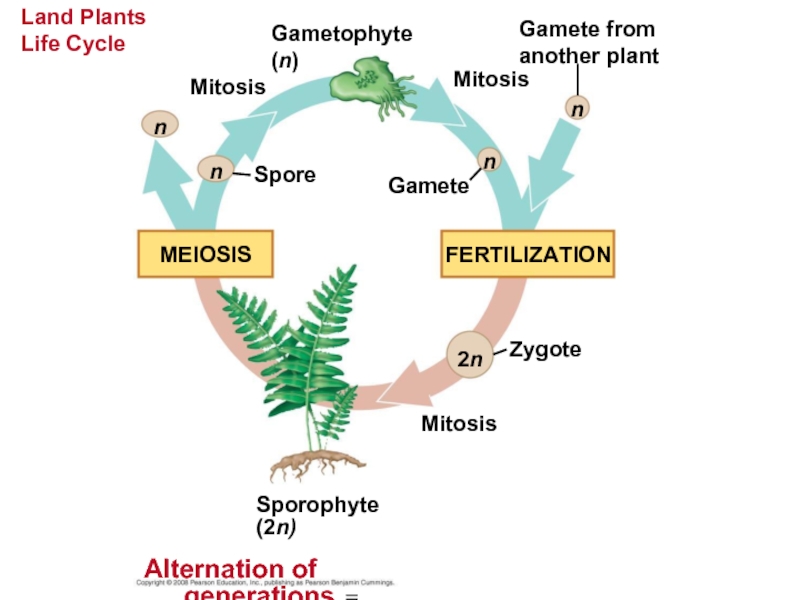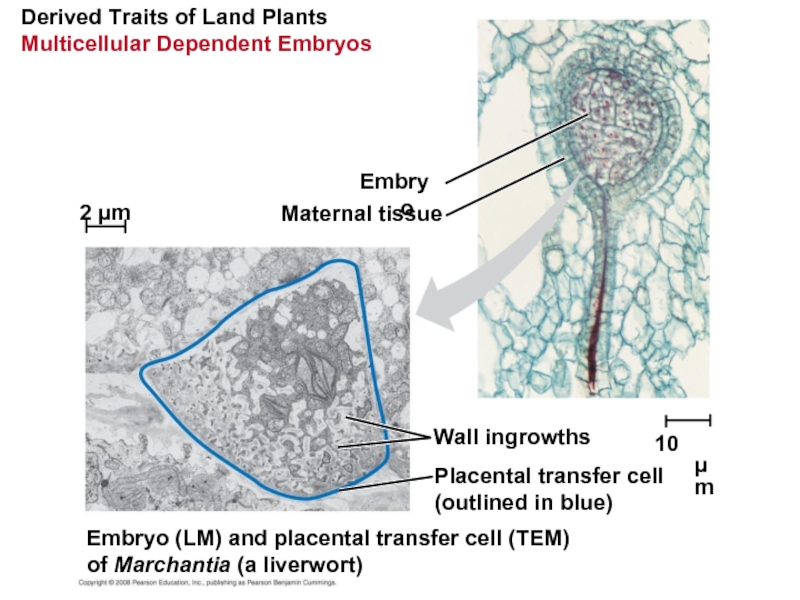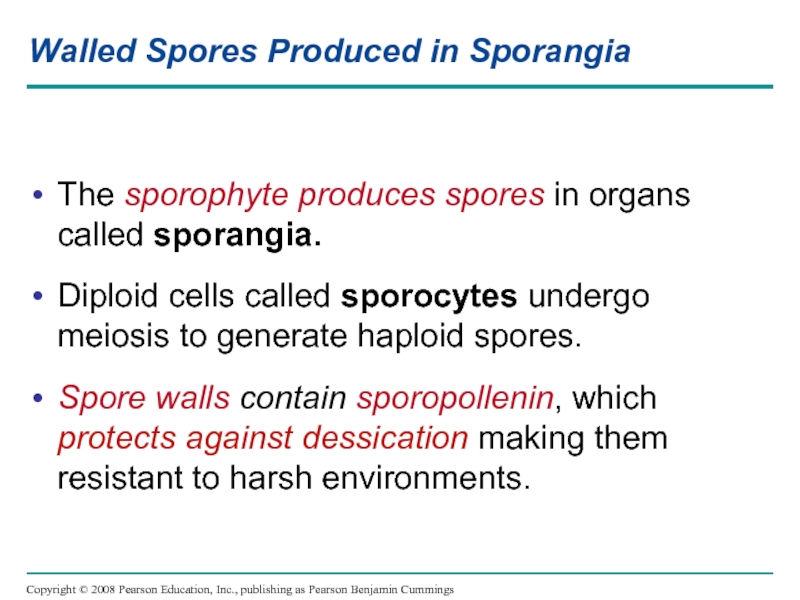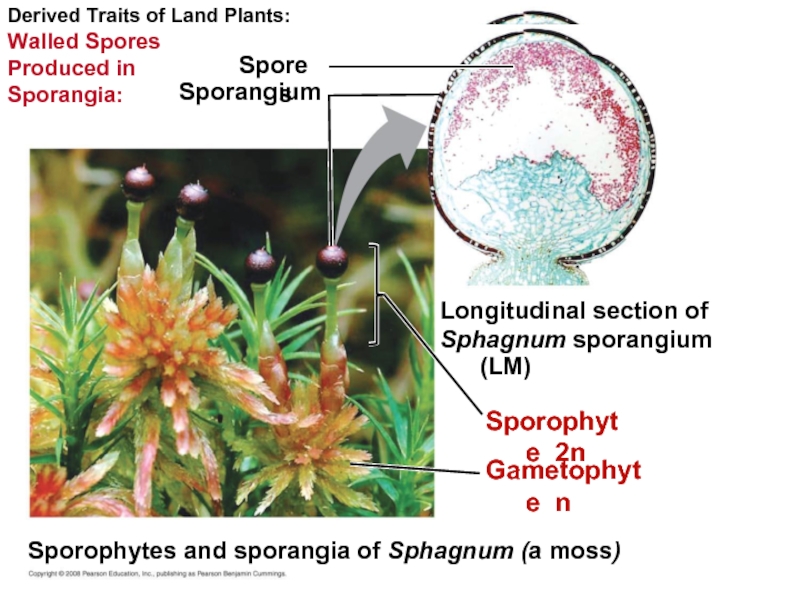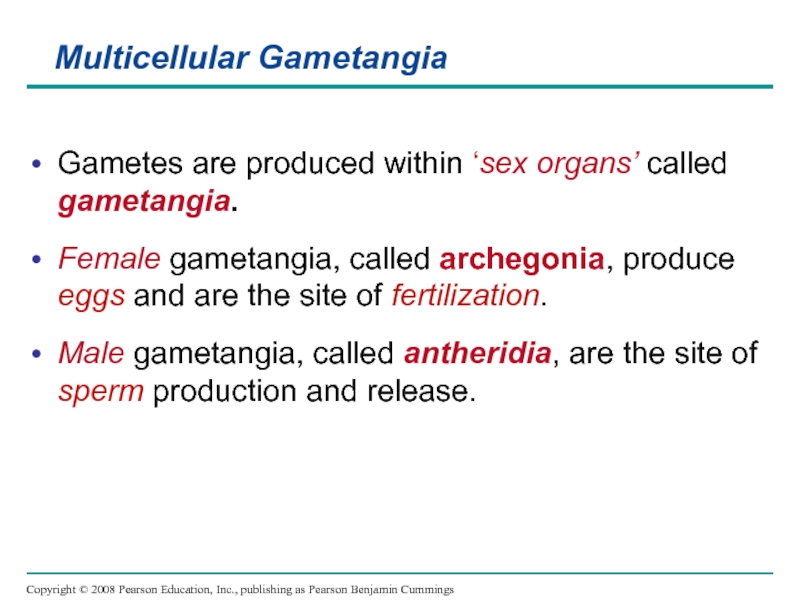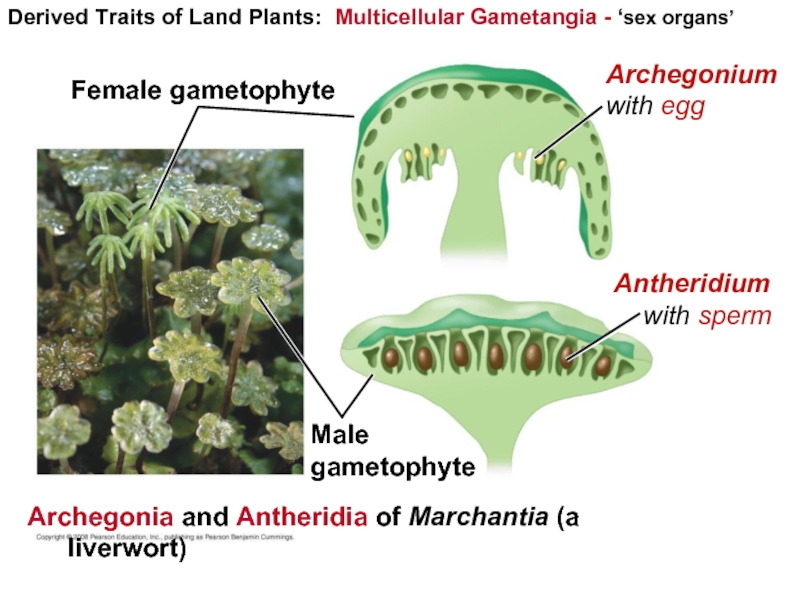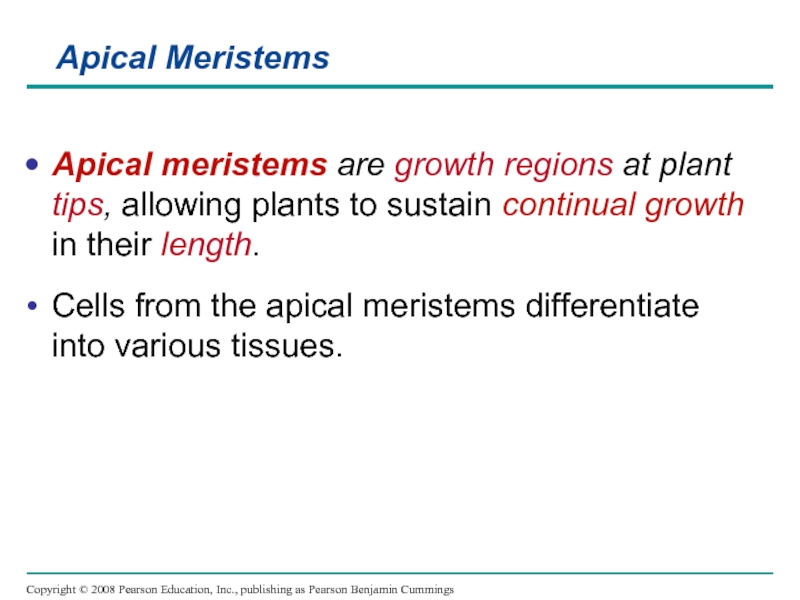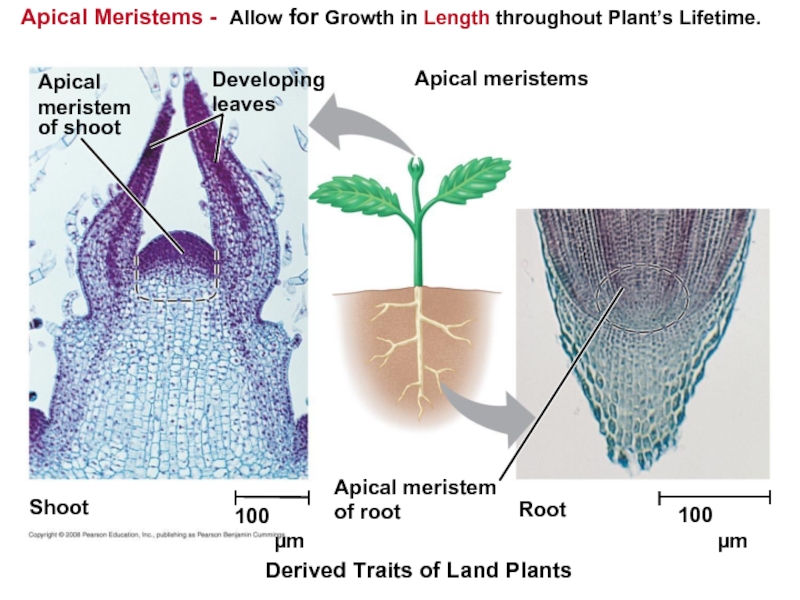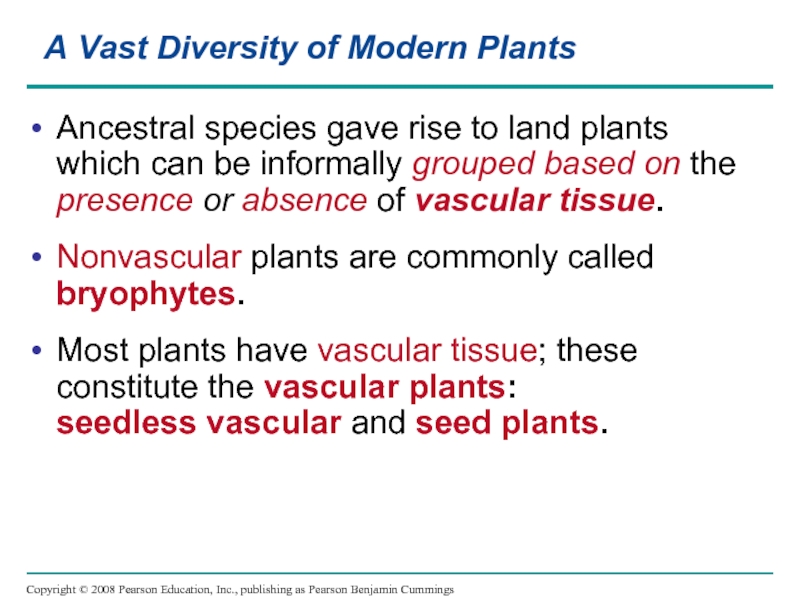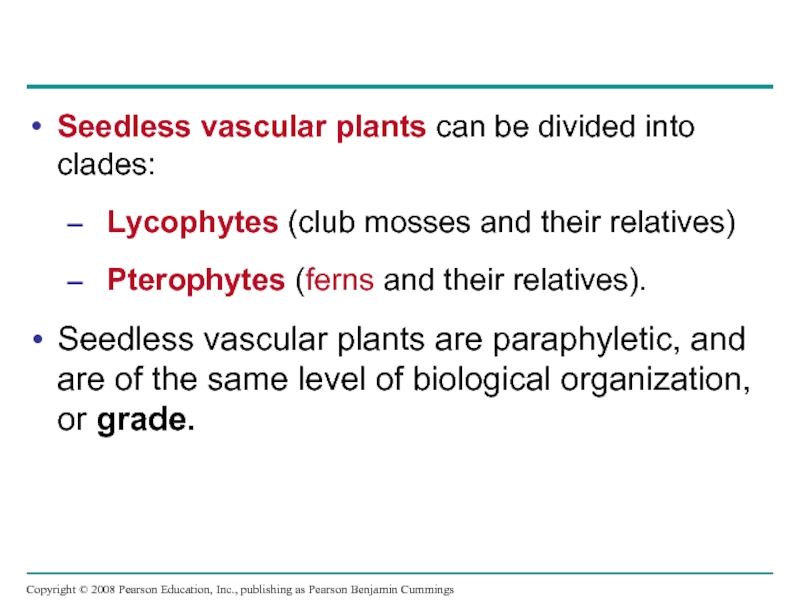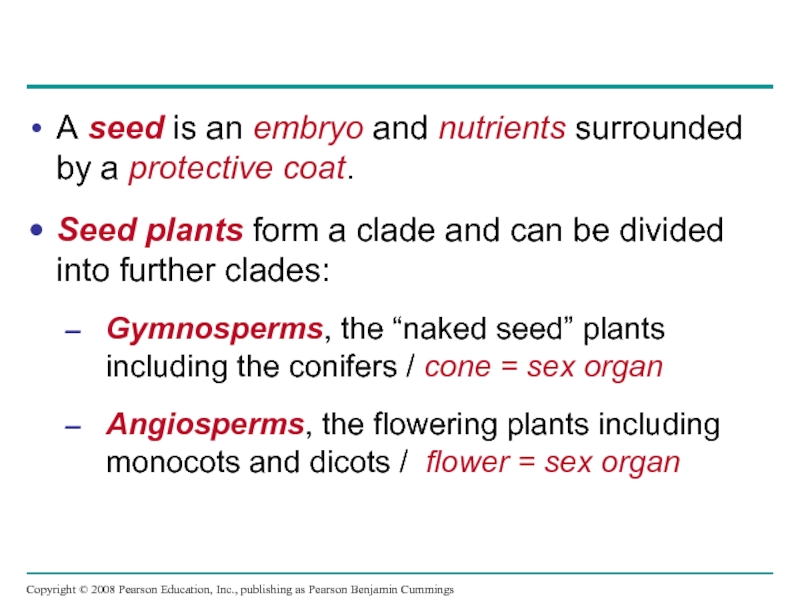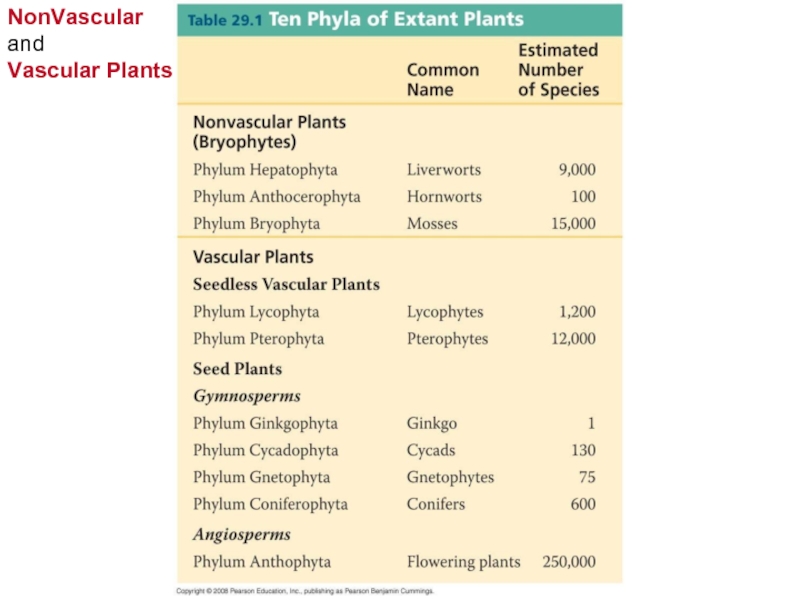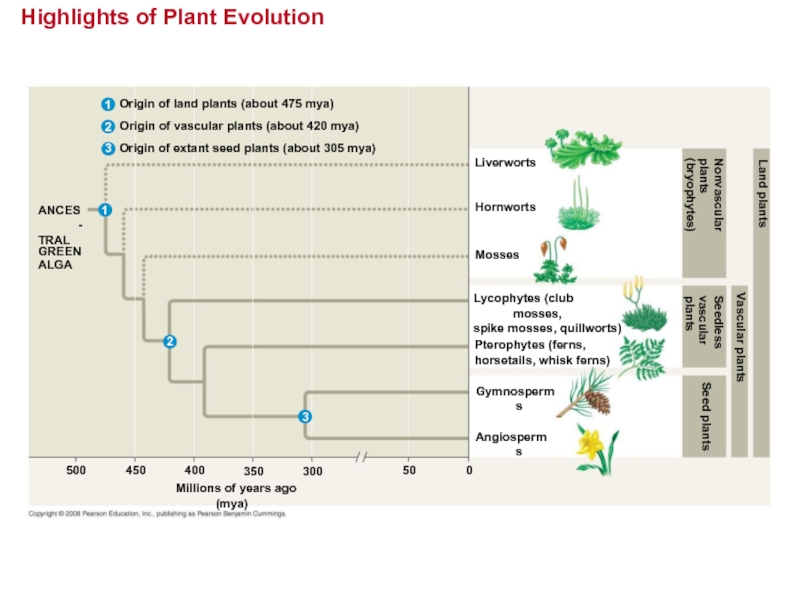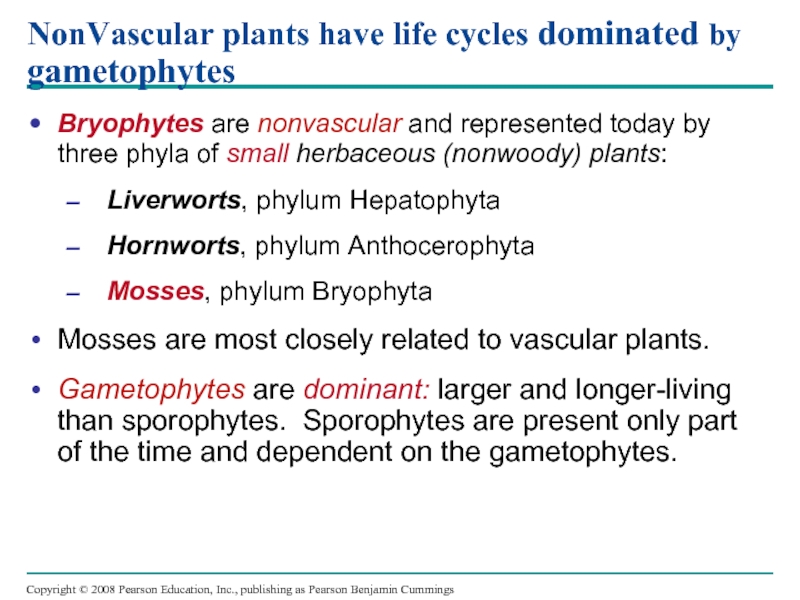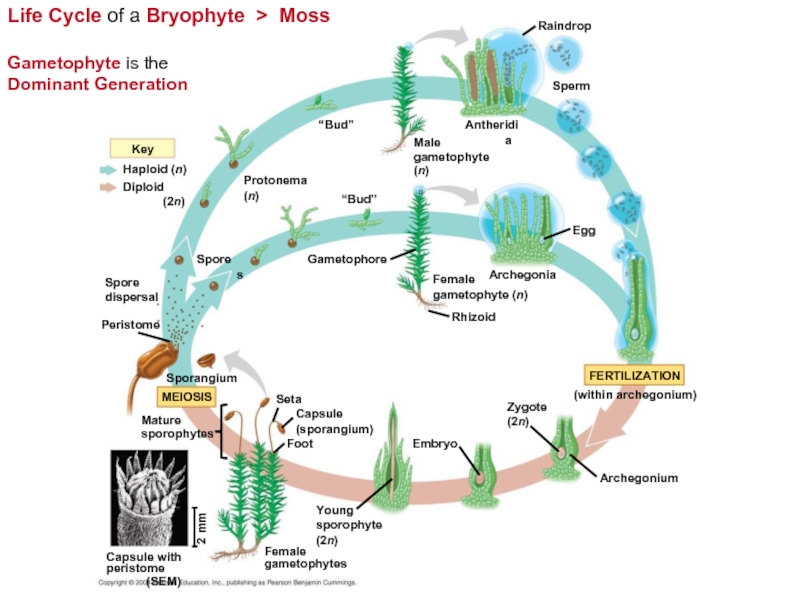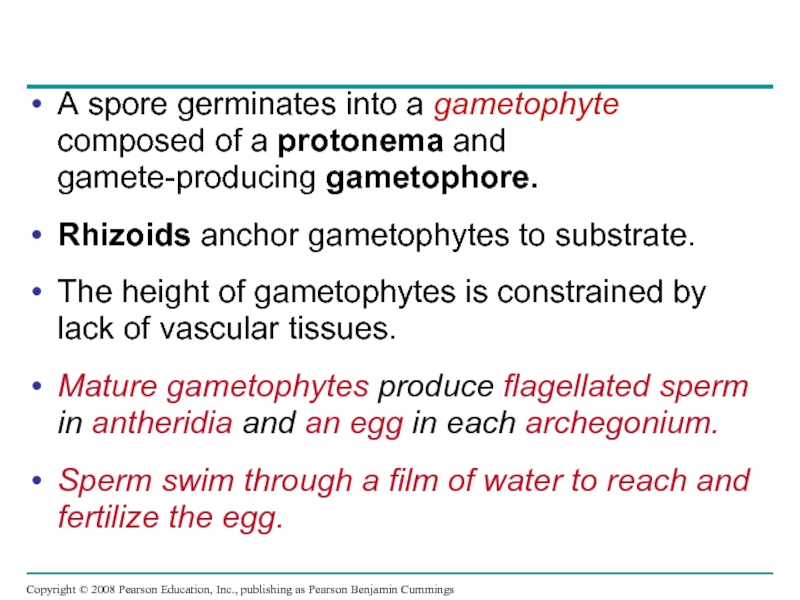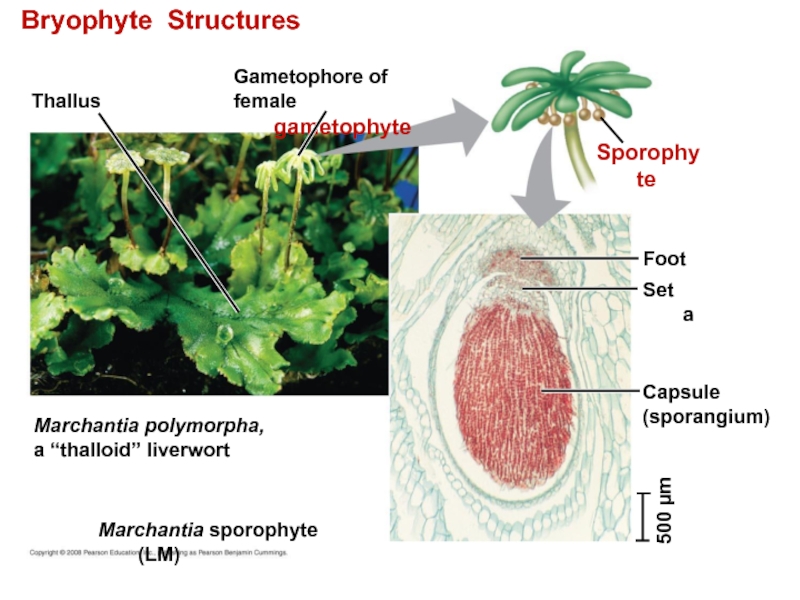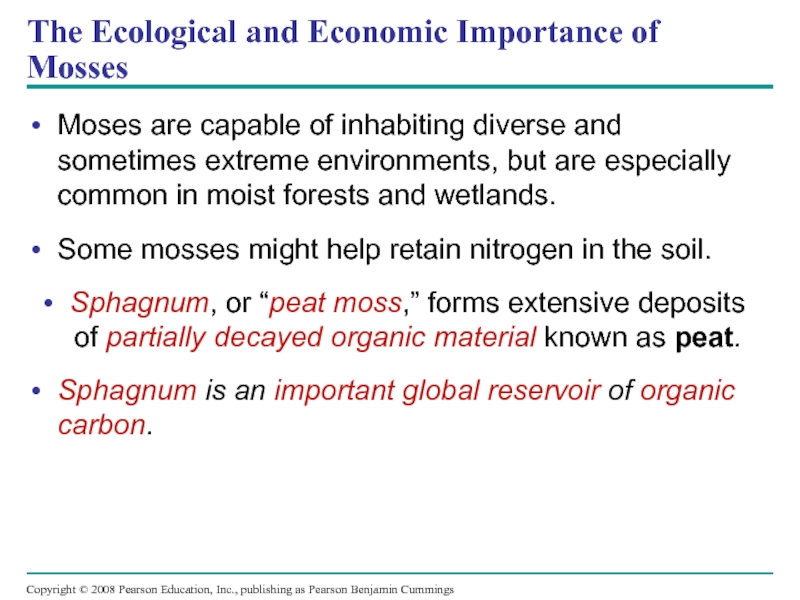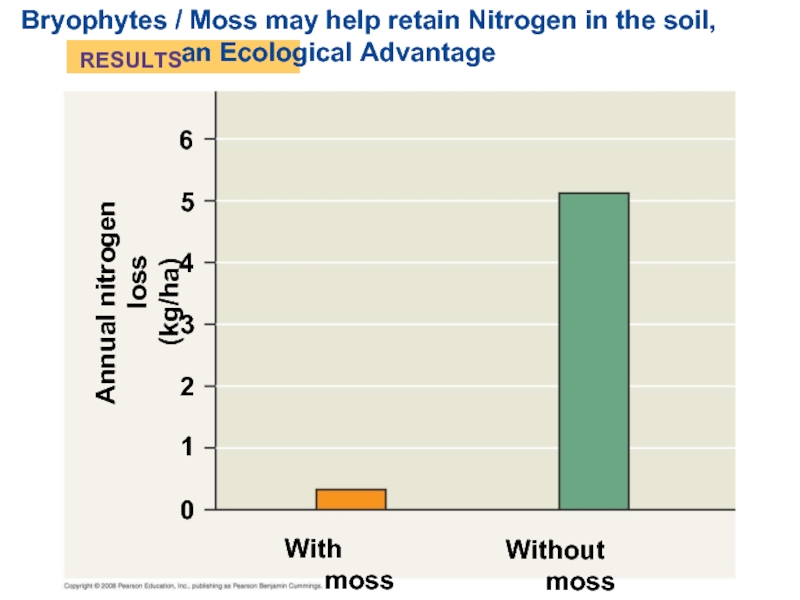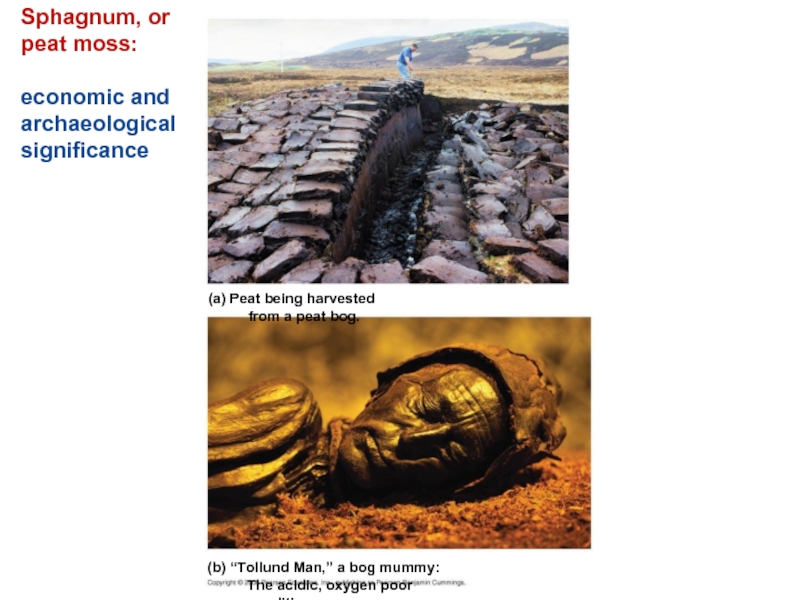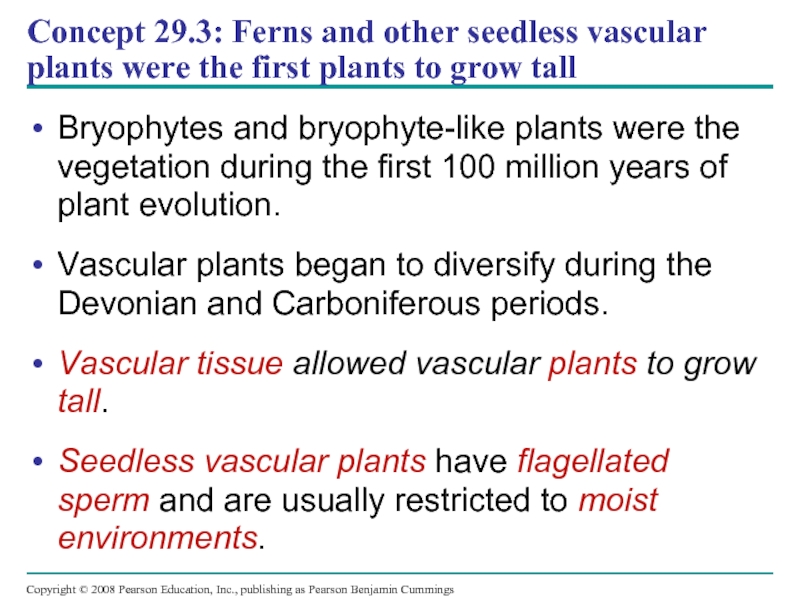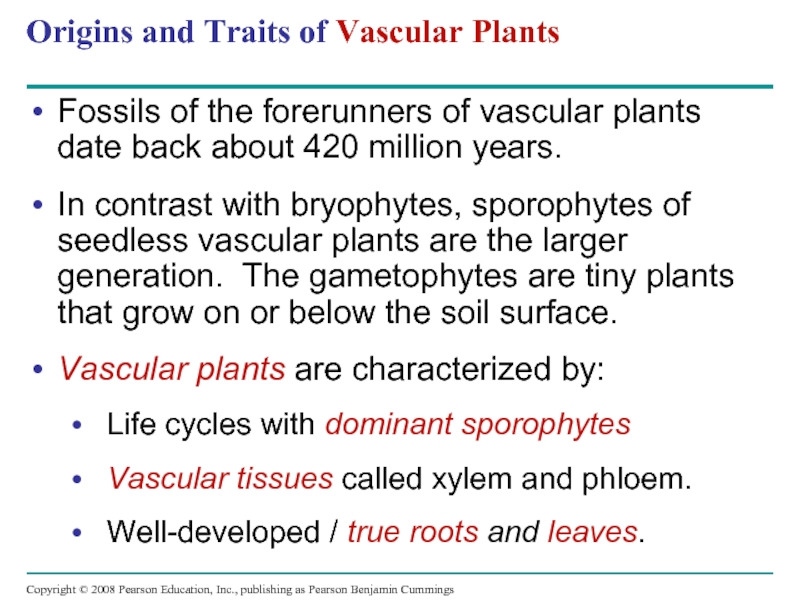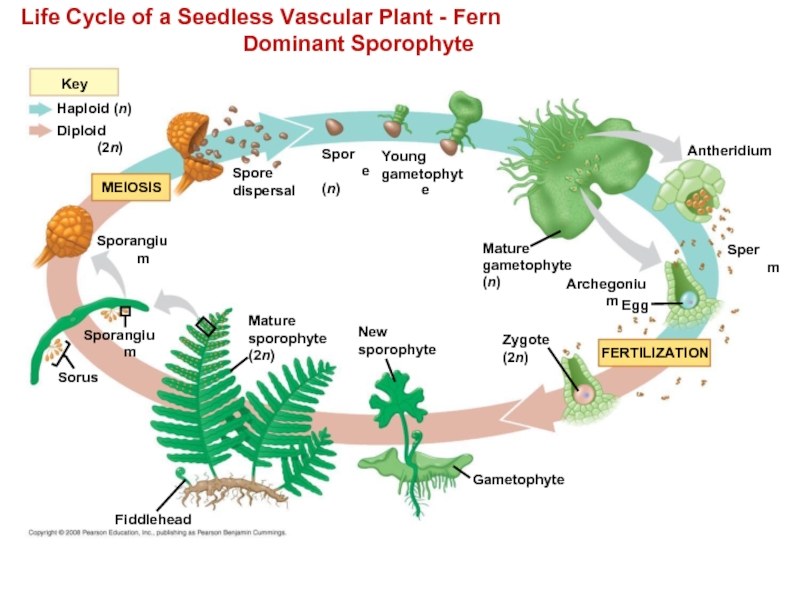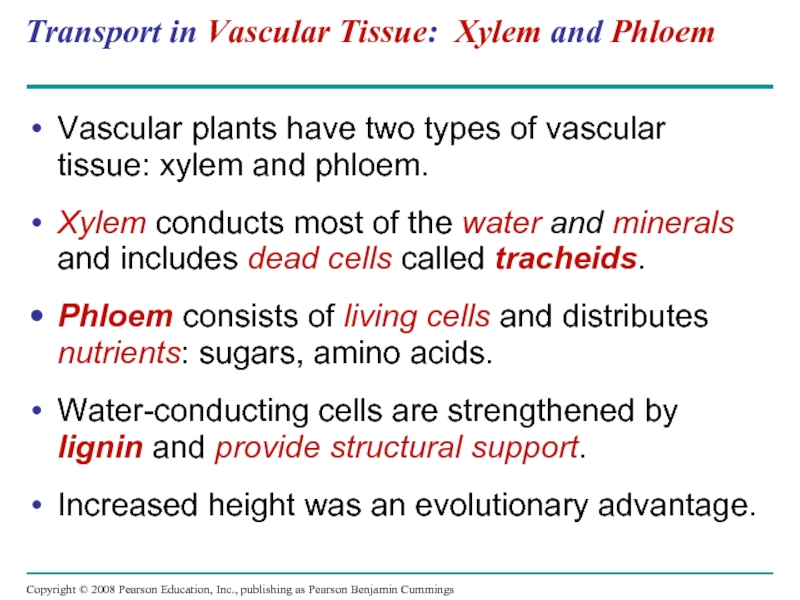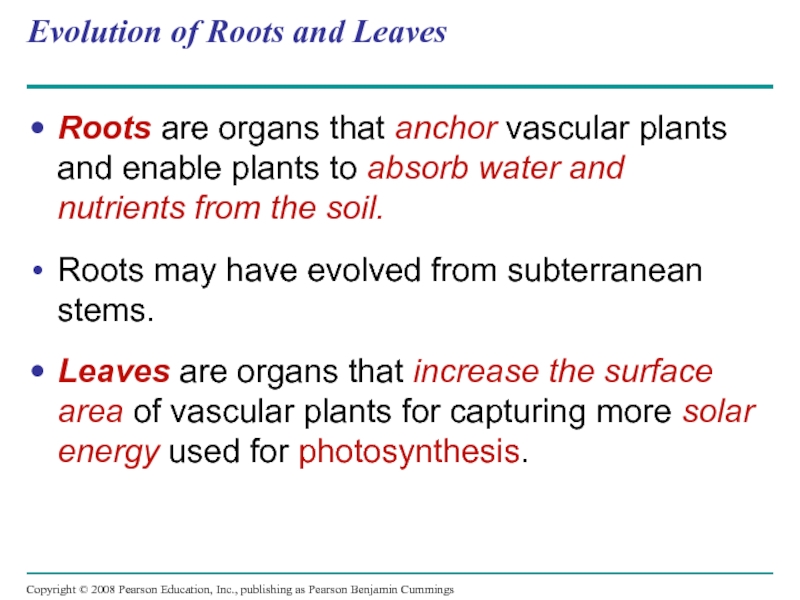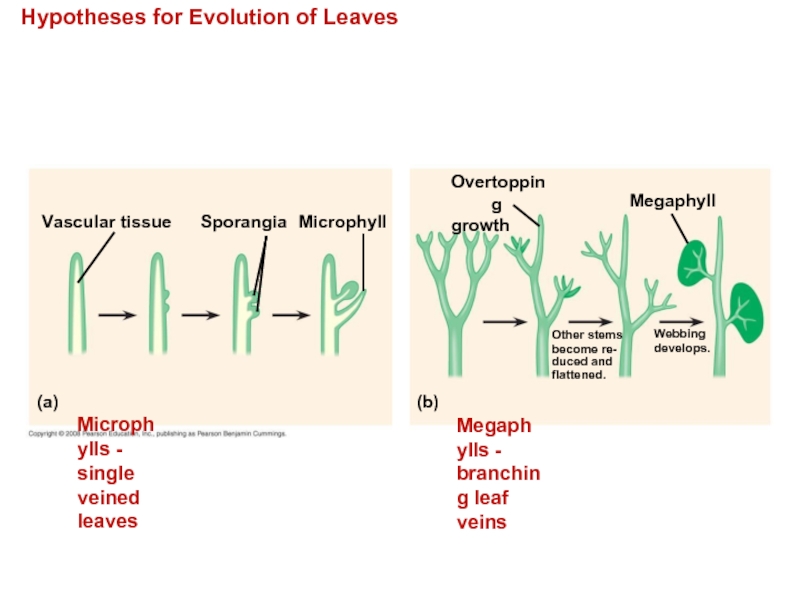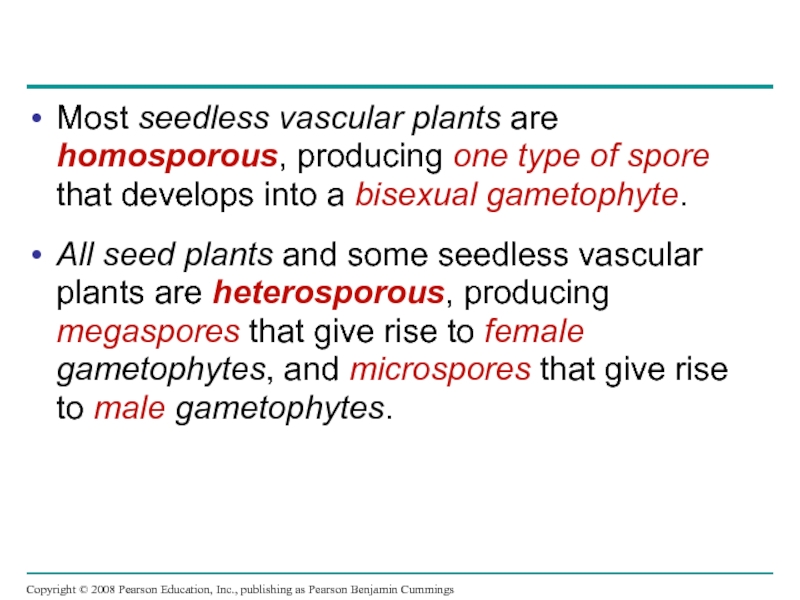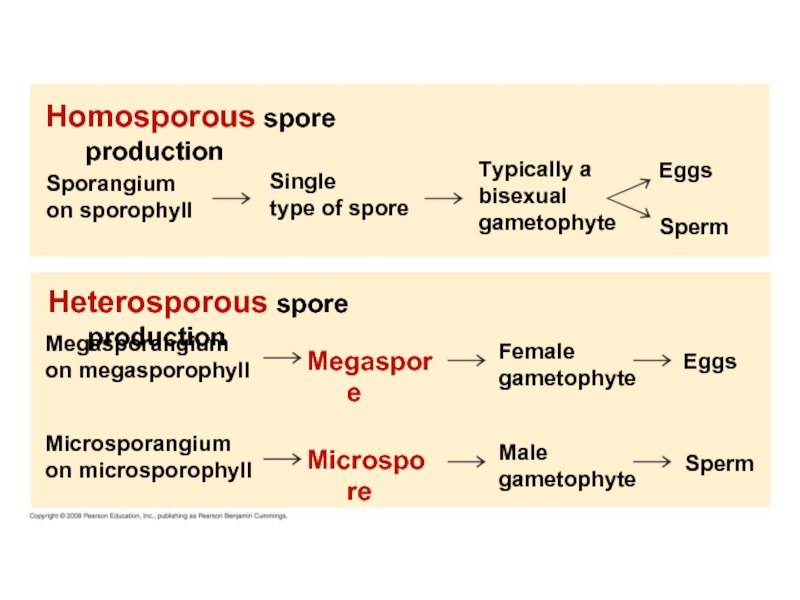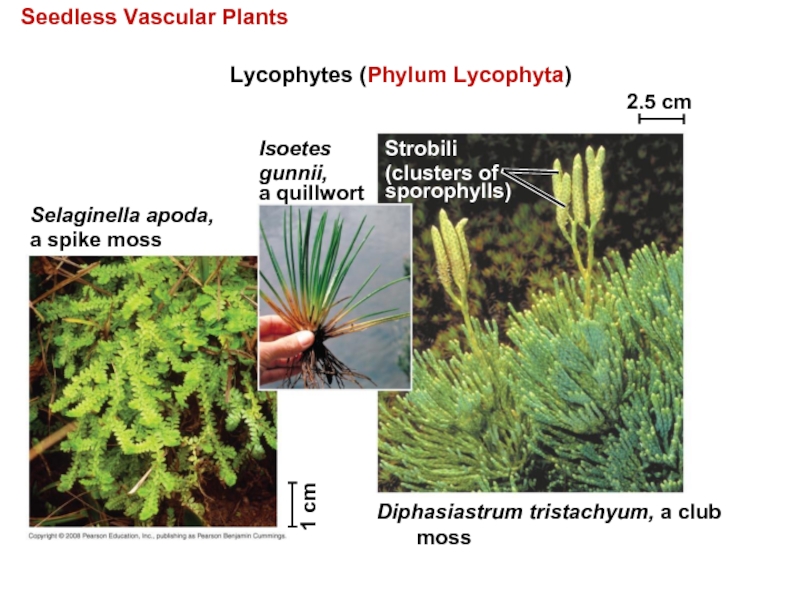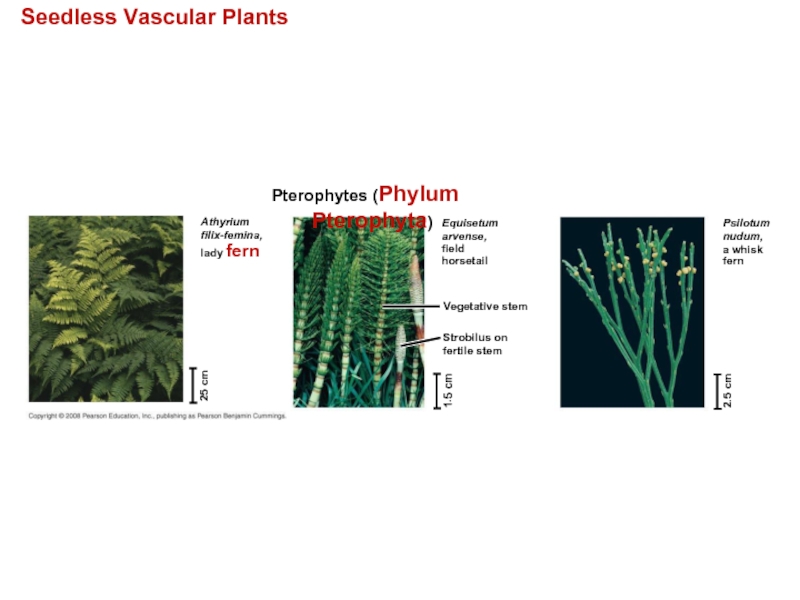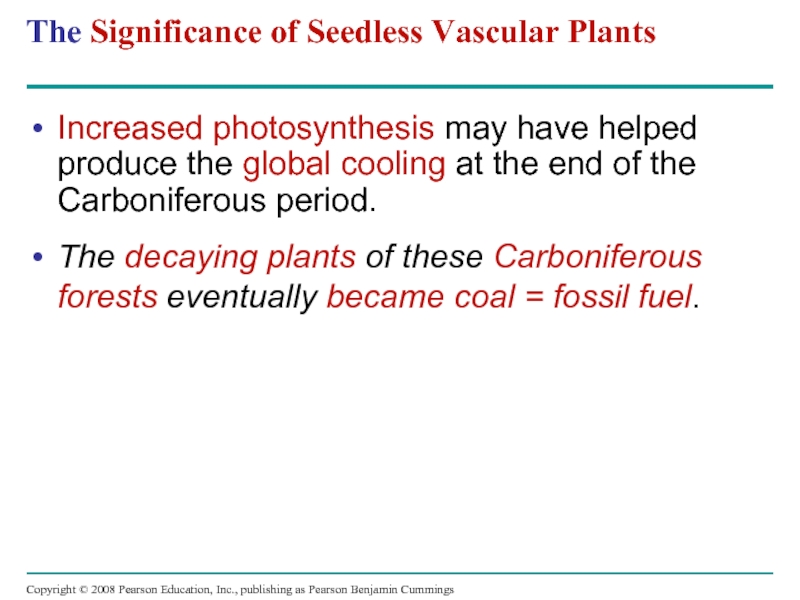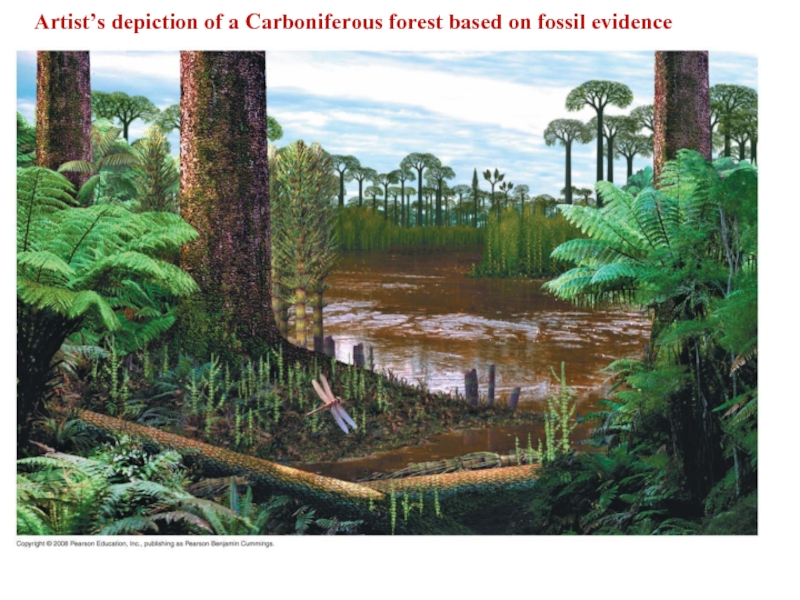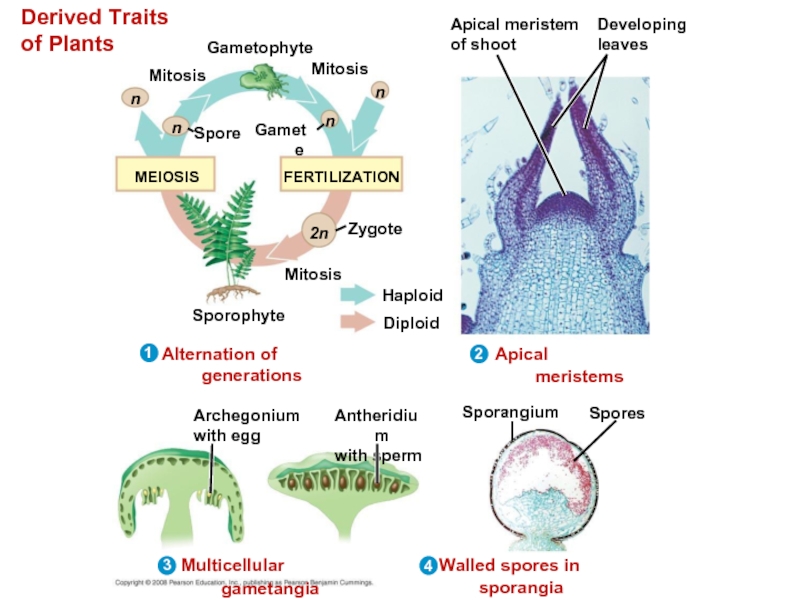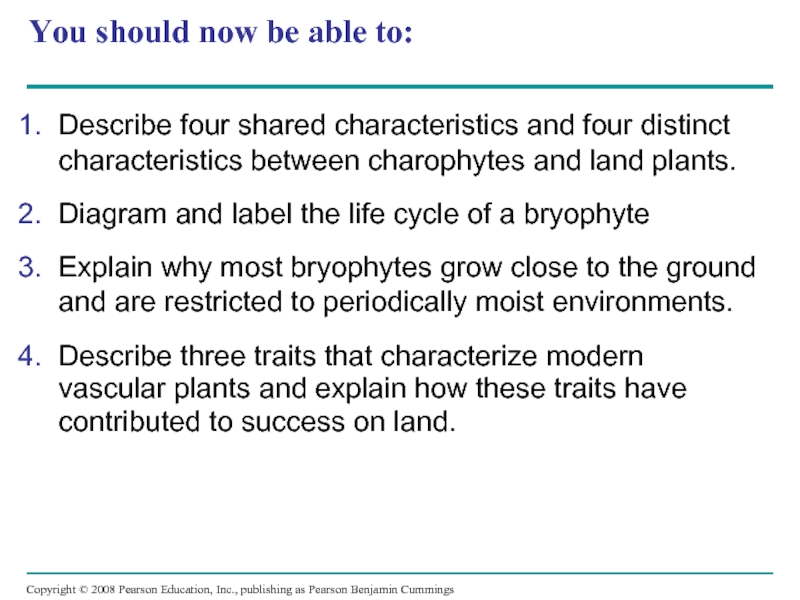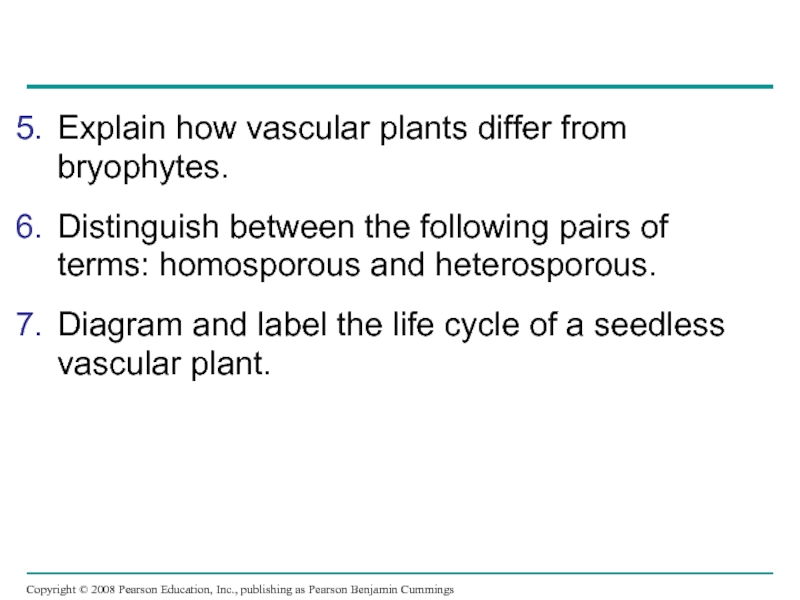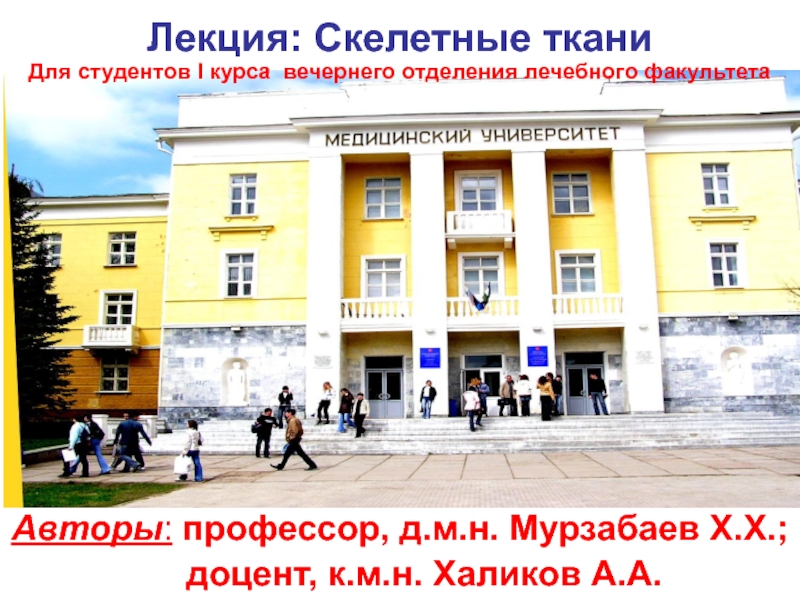- Главная
- Разное
- Дизайн
- Бизнес и предпринимательство
- Аналитика
- Образование
- Развлечения
- Красота и здоровье
- Финансы
- Государство
- Путешествия
- Спорт
- Недвижимость
- Армия
- Графика
- Культурология
- Еда и кулинария
- Лингвистика
- Английский язык
- Астрономия
- Алгебра
- Биология
- География
- Детские презентации
- Информатика
- История
- Литература
- Маркетинг
- Математика
- Медицина
- Менеджмент
- Музыка
- МХК
- Немецкий язык
- ОБЖ
- Обществознание
- Окружающий мир
- Педагогика
- Русский язык
- Технология
- Физика
- Философия
- Химия
- Шаблоны, картинки для презентаций
- Экология
- Экономика
- Юриспруденция
Plant Diversity I: How Plants Colonized Land презентация
Содержание
- 1. Plant Diversity I: How Plants Colonized Land
- 2. Overview: The Greening of Earth Since colonizing
- 3. Morphological and Molecular Evidence Land plants share
- 4. Rosette cellulose-synthesizing complexes Found only in land plants and charophycean green algae 30 nm
- 5. Adaptations Enabling the Move to Land In
- 6. Three Clades are candidates for Plant Kingdom
- 7. Derived Traits of Plants A cuticle and
- 8. Alternation of Generations and
- 9. Land Plants Life Cycle Gametophyte (n) Gamete
- 10. Derived Traits of Land Plants Multicellular Dependent
- 11. Walled Spores Produced in Sporangia The sporophyte
- 12. Derived Traits of Land Plants: Walled Spores
- 13. Multicellular Gametangia Gametes are produced
- 14. Derived Traits of Land Plants: Multicellular Gametangia
- 15. Apical Meristems Apical meristems are
- 16. Apical Meristems - Allow for Growth in
- 17. Ancestral species gave rise to land plants
- 18. Seedless vascular plants can be divided into
- 19. A seed is an embryo and nutrients
- 20. NonVascular and Vascular Plants
- 21. Highlights
- 22. NonVascular plants have life cycles dominated by
- 23. Life Cycle of a Bryophyte > Moss
- 24. A spore germinates into a gametophyte composed
- 25. Bryophyte Structures Thallus Gametophore of female gametophyte
- 26. The Ecological and Economic Importance of Mosses
- 27. Bryophytes / Moss may help retain
- 28. Sphagnum, or peat moss: economic
- 29. Concept 29.3: Ferns and other seedless vascular
- 30. Origins and Traits of Vascular Plants Fossils
- 31. Life Cycle of a Seedless Vascular Plant
- 32. Transport in Vascular Tissue: Xylem and Phloem
- 33. Evolution of Roots and Leaves Roots are
- 34. Hypotheses for Evolution of Leaves Vascular tissue
- 35. Most seedless vascular plants are homosporous, producing
- 36. Homosporous spore production Sporangium on sporophyll
- 37. Seedless Vascular Plants Lycophytes (Phylum Lycophyta) Selaginella
- 38. Seedless Vascular Plants Pterophytes (Phylum Pterophyta) Athyrium
- 39. The Significance of Seedless Vascular Plants Increased
- 40. Artist’s depiction of a Carboniferous forest based on fossil evidence
- 41. Derived Traits of
- 42. You should now be able to: Describe
- 43. Explain how vascular plants differ from bryophytes.
Слайд 2Overview: The Greening of Earth
Since colonizing land at least 475 million
Plants supply oxygen and are the ultimate source of most food eaten by land animals.
Green algae called charophytes are the closest relatives of land plants.
Note that land plants are not descended from modern charophytes, but share a common ancestor with modern charophytes.
Слайд 3Morphological and Molecular Evidence
Land plants share key traits only with green
DNA comparisons of both nuclear and chloroplast genes.
Rose-shaped complexes for cellulose synthesis.
Peroxisome enzymes - minimize loss from photorespiration.
Structure of flagellated sperm.
Formation of a phragmoplast - allignment of cytoskeletal elements and Golgi vesicles for cell plate.
Слайд 4Rosette cellulose-synthesizing complexes
Found only in land plants and charophycean green algae
30
Слайд 5Adaptations Enabling the Move to Land
In green algae charophytes a layer
The movement onto land by charophyte ancestors provided advantages: unfiltered sun, more plentiful CO2, nutrient-rich soil, and few herbivores or pathogens.
Land presented challenges: a scarcity of water and lack of structural support.
Слайд 6Three Clades are candidates for Plant Kingdom
ANCESTRAL
ALGA
Red algae
Chlorophytes
Charophytes
Embryophytes
Viridiplantae
Streptophyta
Plantae
Слайд 7Derived Traits of Plants
A cuticle and secondary compounds evolved in many
Four key derived traits of plants are absent in the green algae charophytes:
Alternation of generations - with multicellular, dependent embryos.
Walled spores produced in sporangia
Multicellular gametangia
Apical meristems
Слайд 8Alternation of Generations and
Multicellular Dependent Embryos
The
Fusion of the gametes gives rise to the diploid sporophyte, which produces haploid spores by meiosis.
The diploid embryo is retained within the tissue of the female gametophyte. Nutrients are transferred from parent to embryo through placental transfer cells.
Land plants are called embryophytes because of the dependency of the embryo on the parent.
Слайд 9Land Plants Life Cycle
Gametophyte
(n)
Gamete from
another plant
n
n
Mitosis
Gamete
FERTILIZATION
MEIOSIS
Mitosis
Spore
n
n
2n
Zygote
Mitosis
Sporophyte
(2n)
Alternation of generations = Derived traits
Слайд 10Derived Traits of Land Plants
Multicellular Dependent Embryos
Embryo
Maternal tissue
Wall ingrowths
Placental transfer cell
(outlined
Embryo (LM) and placental transfer cell (TEM)
of Marchantia (a liverwort)
2 µm
10 µm
Слайд 11Walled Spores Produced in Sporangia
The sporophyte produces spores in organs called
Diploid cells called sporocytes undergo meiosis to generate haploid spores.
Spore walls contain sporopollenin, which protects against dessication making them resistant to harsh environments.
Слайд 12Derived Traits of Land Plants: Walled Spores
Produced in
Sporangia:
Spores
Sporangium
Sporophyte 2n
Longitudinal section
Sphagnum sporangium (LM)
Gametophyte n
Sporophytes and sporangia of Sphagnum (a moss)
Слайд 13 Multicellular Gametangia
Gametes are produced within ‘sex organs’ called gametangia.
Female
Male gametangia, called antheridia, are the site of sperm production and release.
Слайд 14Derived Traits of Land Plants: Multicellular Gametangia - ‘sex organs’
Female gametophyte
Male
gametophyte
Antheridium
Archegonium
with egg
Archegonia and Antheridia of Marchantia (a liverwort)
Слайд 15 Apical Meristems
Apical meristems are growth regions at plant tips,
Cells from the apical meristems differentiate into various tissues.
Слайд 16Apical Meristems - Allow for Growth in Length throughout Plant’s Lifetime.
Apical
meristem
of
Developing
leaves
Apical meristems
Apical meristem
of root
Root
100 µm
100 µm
Shoot
Derived Traits of Land Plants
Слайд 17Ancestral species gave rise to land plants which can be informally
Nonvascular plants are commonly called bryophytes.
Most plants have vascular tissue; these constitute the vascular plants: seedless vascular and seed plants.
A Vast Diversity of Modern Plants
Слайд 18Seedless vascular plants can be divided into clades:
Lycophytes (club mosses and
Pterophytes (ferns and their relatives).
Seedless vascular plants are paraphyletic, and are of the same level of biological organization, or grade.
Слайд 19A seed is an embryo and nutrients surrounded by a protective
Seed plants form a clade and can be divided into further clades:
Gymnosperms, the “naked seed” plants including the conifers / cone = sex organ
Angiosperms, the flowering plants including monocots and dicots / flower = sex organ
Слайд 21
Highlights of Plant Evolution
Origin of land plants (about 475 mya)
1
2
3
1
2
3
Origin of
Origin of extant seed plants (about 305 mya)
ANCES-
TRAL
GREEN
ALGA
Liverworts
Hornworts
Mosses
Lycophytes (club mosses,
spike mosses, quillworts)
Pterophytes (ferns,
horsetails, whisk ferns)
Gymnosperms
Angiosperms
Seed plants
Seedless
vascular
plants
Nonvascular
plants
(bryophytes)
Land plants
Vascular plants
Millions of years ago (mya)
500
450
400
350
300
50
0
Слайд 22NonVascular plants have life cycles dominated by gametophytes
Bryophytes are nonvascular
Liverworts, phylum Hepatophyta
Hornworts, phylum Anthocerophyta
Mosses, phylum Bryophyta
Mosses are most closely related to vascular plants.
Gametophytes are dominant: larger and longer-living than sporophytes. Sporophytes are present only part of the time and dependent on the gametophytes.
Слайд 23Life Cycle of a Bryophyte > Moss
Gametophyte is the
Dominant Generation
Key
Haploid (n)
Diploid
Protonema
(n)
“Bud”
“Bud”
Male
gametophyte
(n)
Female
gametophyte (n)
Gametophore
Rhizoid
Spores
Spore
dispersal
Peristome
Sporangium
MEIOSIS
Seta
Capsule
(sporangium)
Foot
Mature
sporophytes
Capsule with
peristome (SEM)
Female
gametophytes
2 mm
Raindrop
Sperm
Antheridia
Egg
Archegonia
FERTILIZATION
(within archegonium)
Zygote
(2n)
Embryo
Archegonium
Young
sporophyte
(2n)
Слайд 24A spore germinates into a gametophyte composed of a protonema and
Rhizoids anchor gametophytes to substrate.
The height of gametophytes is constrained by lack of vascular tissues.
Mature gametophytes produce flagellated sperm in antheridia and an egg in each archegonium.
Sperm swim through a film of water to reach and fertilize the egg.
Слайд 25Bryophyte Structures
Thallus
Gametophore of
female gametophyte
Marchantia polymorpha,
a “thalloid” liverwort
Marchantia sporophyte (LM)
Sporophyte
Foot
Seta
Capsule
(sporangium)
500 µm
Слайд 26The Ecological and Economic Importance of Mosses
Moses are capable of inhabiting
Some mosses might help retain nitrogen in the soil.
Sphagnum, or “peat moss,” forms extensive deposits of partially decayed organic material known as peat.
Sphagnum is an important global reservoir of organic carbon.
Слайд 27
Bryophytes / Moss may help retain Nitrogen in the soil,
an Ecological
RESULTS
With moss
Without moss
Annual nitrogen loss
(kg/ha)
0
1
2
3
4
5
6
Слайд 28Sphagnum, or peat moss:
economic and archaeological significance
(a) Peat being harvested
(b) “Tollund Man,” a bog mummy: The acidic, oxygen poor conditions
can preserve bodies.
Слайд 29Concept 29.3: Ferns and other seedless vascular plants were the first
Bryophytes and bryophyte-like plants were the vegetation during the first 100 million years of plant evolution.
Vascular plants began to diversify during the Devonian and Carboniferous periods.
Vascular tissue allowed vascular plants to grow tall.
Seedless vascular plants have flagellated sperm and are usually restricted to moist environments.
Слайд 30Origins and Traits of Vascular Plants
Fossils of the forerunners of vascular
In contrast with bryophytes, sporophytes of seedless vascular plants are the larger generation. The gametophytes are tiny plants that grow on or below the soil surface.
Vascular plants are characterized by:
Life cycles with dominant sporophytes
Vascular tissues called xylem and phloem.
Well-developed / true roots and leaves.
Слайд 31Life Cycle of a Seedless Vascular Plant - Fern
Key
Haploid (n)
Diploid (2n)
MEIOSIS
Spore
dispersal
Sporangium
Sporangium
Mature
sporophyte
(2n)
Sorus
Fiddlehead
Spore
(n)
Young
gametophyte
Mature
gametophyte
(n)
Archegonium
Egg
Antheridium
Sperm
FERTILIZATION
New
sporophyte
Gametophyte
Zygote
(2n)
Слайд 32Transport in Vascular Tissue: Xylem and Phloem
Vascular plants have two
Xylem conducts most of the water and minerals and includes dead cells called tracheids.
Phloem consists of living cells and distributes nutrients: sugars, amino acids.
Water-conducting cells are strengthened by lignin and provide structural support.
Increased height was an evolutionary advantage.
Слайд 33Evolution of Roots and Leaves
Roots are organs that anchor vascular plants
Roots may have evolved from subterranean stems.
Leaves are organs that increase the surface area of vascular plants for capturing more solar energy used for photosynthesis.
Слайд 34Hypotheses for Evolution of Leaves
Vascular tissue
Sporangia
Microphyll
(a) Microphylls - single veined leaves
(b)
Overtopping
growth
Megaphyll
Other stems
become re-
duced and
flattened.
Webbing
develops.
Слайд 35Most seedless vascular plants are homosporous, producing one type of spore
All seed plants and some seedless vascular plants are heterosporous, producing megaspores that give rise to female gametophytes, and microspores that give rise to male gametophytes.
Слайд 36
Homosporous spore production
Sporangium
on sporophyll
Single
type of spore
Typically a
bisexual
gametophyte
Eggs
Sperm
Eggs
Sperm
Heterosporous spore production
Megasporangium
on megasporophyll
Megaspore
Female
gametophyte
Male
gametophyte
Microspore
Microsporangium
on microsporophyll
Слайд 37Seedless Vascular Plants
Lycophytes (Phylum Lycophyta)
Selaginella apoda,
a spike moss
Isoetes
gunnii,
a quillwort
Strobili
(clusters of
sporophylls)
2.5 cm
Diphasiastrum
1 cm
Слайд 38Seedless Vascular Plants
Pterophytes (Phylum Pterophyta)
Athyrium
filix-femina,
lady fern
Vegetative stem
Strobilus on
fertile stem
1.5 cm
25 cm
2.5
Psilotum
nudum,
a whisk
fern
Equisetum
arvense,
field
horsetail
Слайд 39The Significance of Seedless Vascular Plants
Increased photosynthesis may have helped produce
The decaying plants of these Carboniferous forests eventually became coal = fossil fuel.
Слайд 41
Derived Traits of Plants
Gametophyte
Mitosis
Mitosis
Spore
Gamete
Mitosis
n
n
n
n
2n
MEIOSIS
FERTILIZATION
Zygote
Sporophyte
Haploid
Diploid
1
2
3
4
Alternation of generations
Apical meristems
Multicellular gametangia
Walled spores in sporangia
Archegonium
with egg
Antheridium
with sperm
Sporangium
Spores
Apical meristem
of shoot
Developing
leaves
Слайд 42You should now be able to:
Describe four shared characteristics and four
Diagram and label the life cycle of a bryophyte
Explain why most bryophytes grow close to the ground and are restricted to periodically moist environments.
Describe three traits that characterize modern vascular plants and explain how these traits have contributed to success on land.
Слайд 43Explain how vascular plants differ from bryophytes.
Distinguish between the following pairs
Diagram and label the life cycle of a seedless vascular plant.
